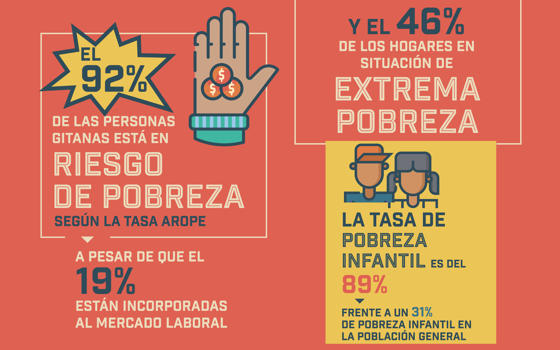28/01/2020
FSG
 The UN Special Rapporteur on extreme poverty and Human Rights, Philip Alston, is conducting a research visit to Spain from January 27 to February 7, 2020 to asses poverty in the country.
The UN Special Rapporteur on extreme poverty and Human Rights, Philip Alston, is conducting a research visit to Spain from January 27 to February 7, 2020 to asses poverty in the country.From the Fundación Secretariado Gitano, based on the results collected in our Comparative Study on the situation of the Roma population in Spain in relation to employment and poverty presented last September, we have transferred to the Special Rapporteur some of the main conclusions, especially regarding to extreme poverty and child poverty.
This Study complements and confirms the scenario of strong inequality, lack of protection and vulnerability of the Roma population that other studies have pointed out in recent years (EUMIDIS II 2016; FOESSA 2013 and 2018; Housing Map FSG 2017, Education FSG 2013).
The conclusions of the Study show us a very young population, with 66% of people under thirty, where poverty and exclusion affects more than 80% of the total Roma population and 46% is extremely poor (something with great impact on minors). The child poverty rate stands at 89% compared to 30.7% in the general population.
Another of the conclusions, reveals the low presence of the Roma population in the labor market, marked by precariousness and weak protection, with an unemployment rate that reaches 52% (which is more than 3 times that of the population overall, 14.5%), and where Roma women suffer from a clear disadvantage in all areas due to their double status, such as women and Roma, with an employment rate that only reaches 16%.
The educational level is, by far, the main determinant for employment and, therefore, of the socioeconomic inequality of the Roma population. Only 17% of the Roma population over 16 have completed secondary education level studies or higher, compared to almost 80% of the general population. This is the factor responsible for most of the inequality gap that separates Roma men and women from the standards of the rest of the population.
Links